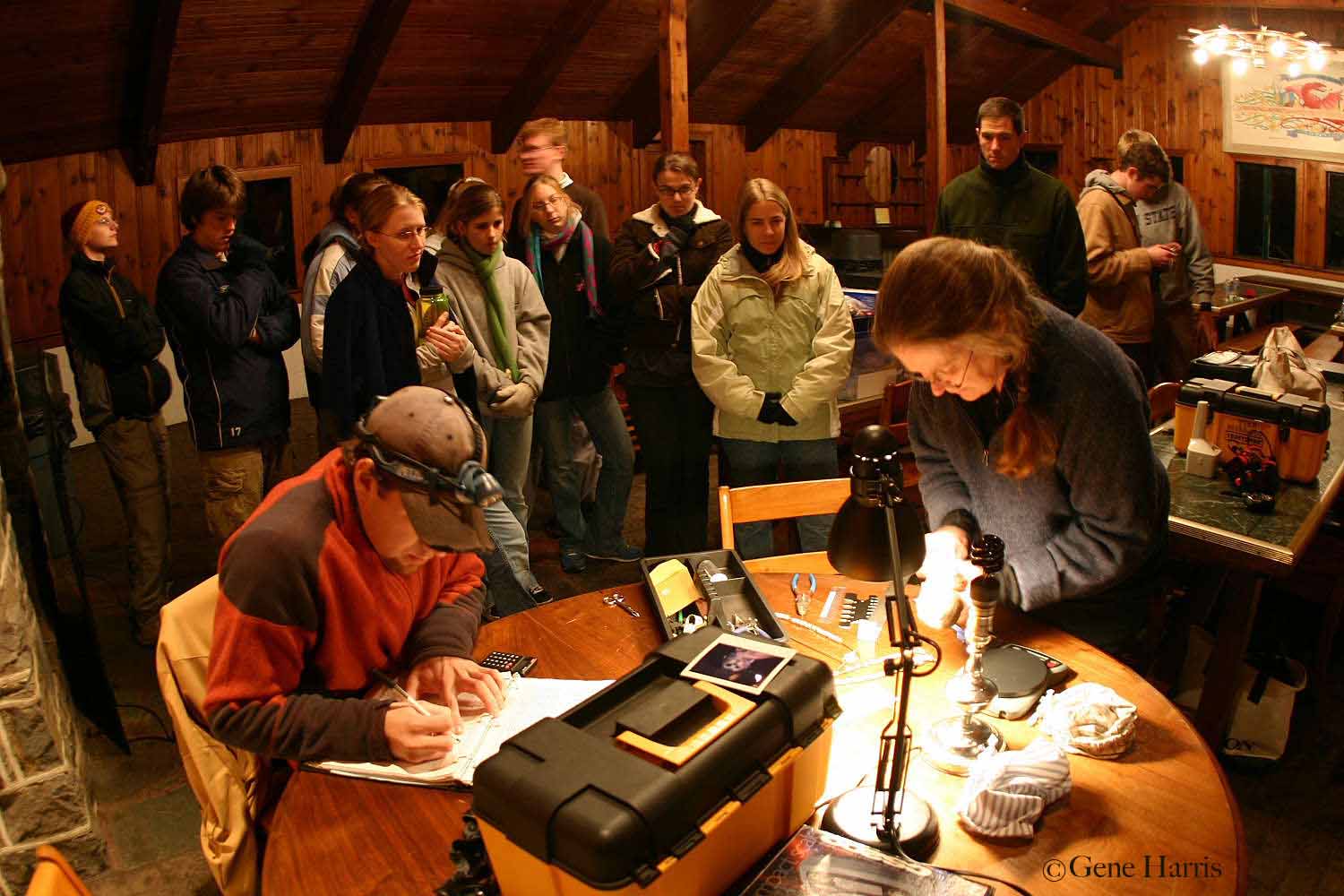Northern Saw-whet Owls
Saw-whet Owl Research
Each autumn, Scott Weidensaul coordinates a major research effort under the auspices of the Ned Smith Center for Nature and Art to learn more about the movements and ecology of the northern saw-whet owl, the smallest owl in the East and one of the most enigmatic birds in North America.
 Weidensaul oversees a research crew of 18 banders and 85 assistants, working at three sites in the mountains of eastern and southcentral Pennsylvania every night from the beginning of October until Thanksgiving. Each evening at dusk, crew members open a line of almost invisible mist nets in the woods and turn on an audiolure that broadcasts a tape recording of a male saw-whet owl's tooting advertisement call. Attracted by the call, migrating owls are lured into the nets, where they are captured and held briefly for banding and processing.
Weidensaul oversees a research crew of 18 banders and 85 assistants, working at three sites in the mountains of eastern and southcentral Pennsylvania every night from the beginning of October until Thanksgiving. Each evening at dusk, crew members open a line of almost invisible mist nets in the woods and turn on an audiolure that broadcasts a tape recording of a male saw-whet owl's tooting advertisement call. Attracted by the call, migrating owls are lured into the nets, where they are captured and held briefly for banding and processing.
Since the project began in 1997, the Ned Smith Center crew has banded more than 11,000 saw-whet owls, with as many as 100 captured in a single evening at a single site. Each owl is weighed, fitted with a lightweight, individually numbered leg band issued by the federal Bird Banding Lab, and a series of measurements are taken. The whole process lasts only five or ten minutes, after which the owl is released unharmed.
In an average year, the research crew will net about 500 saw-whets, of which roughly 30 will already have Banding owls at the Hidden Valley site (©Gene Harris) been banded, either earlier in the season at sites in New England or Canada, or in previous years at banding stations ranging from Virginia to Quebec and the upper Great Lakes region. Likewise, about two dozen of the crew's banded owls are reported by other banding stations across the East every fall. Such encounters help scientists map the range and migration of this little-known species. Already, the Ned Smith Center's work has shown that the Appalachian ridge system is a major migratory route for this bird.
Banding owls at the Hidden Valley site (©Gene Harris) been banded, either earlier in the season at sites in New England or Canada, or in previous years at banding stations ranging from Virginia to Quebec and the upper Great Lakes region. Likewise, about two dozen of the crew's banded owls are reported by other banding stations across the East every fall. Such encounters help scientists map the range and migration of this little-known species. Already, the Ned Smith Center's work has shown that the Appalachian ridge system is a major migratory route for this bird.
For more information on the saw-whet research program, visit the Ned Smith Center's website.
 Participating banding sites in Project Owlnet (©Project Owlnet)The Ned Smith Center is the institutional home of Project Owlnet, a continental network of researchers investigating owl migration. Project Owlnet provides a wealth of information and resources for banders, and a listserve for active owl researchers.
Participating banding sites in Project Owlnet (©Project Owlnet)The Ned Smith Center is the institutional home of Project Owlnet, a continental network of researchers investigating owl migration. Project Owlnet provides a wealth of information and resources for banders, and a listserve for active owl researchers.
